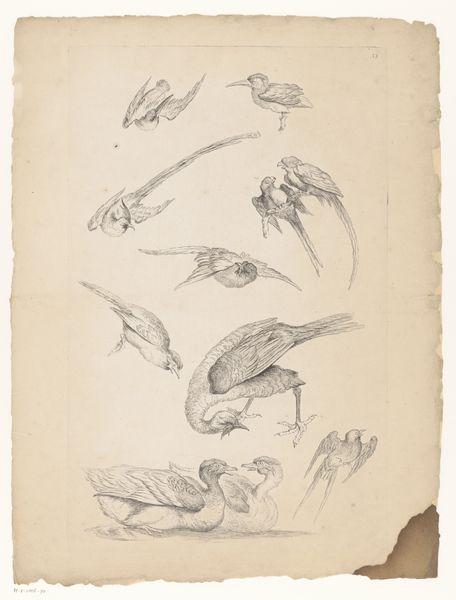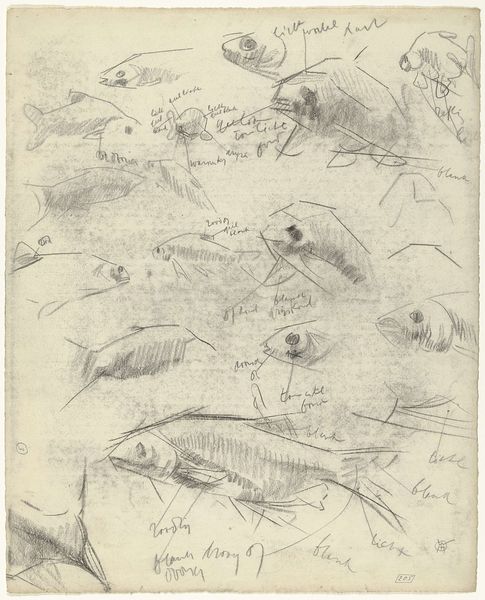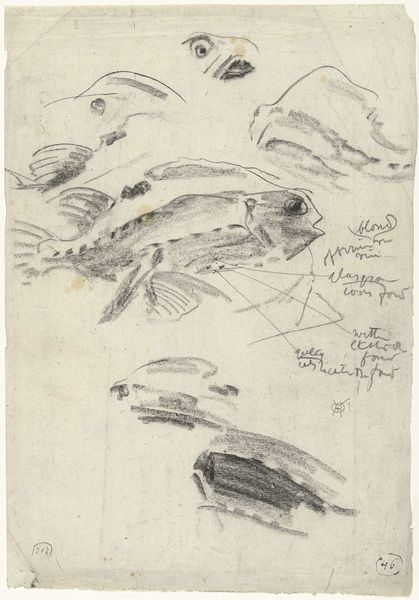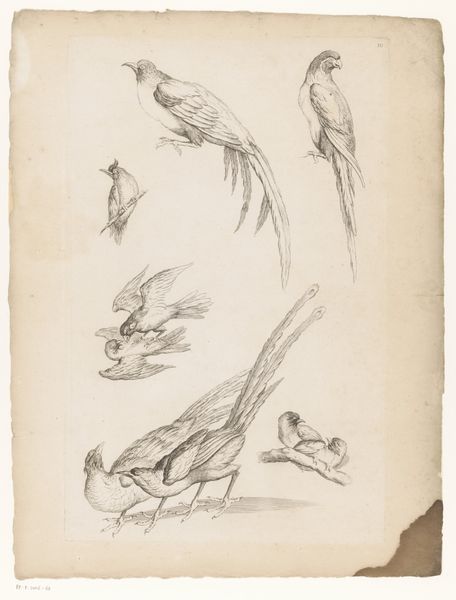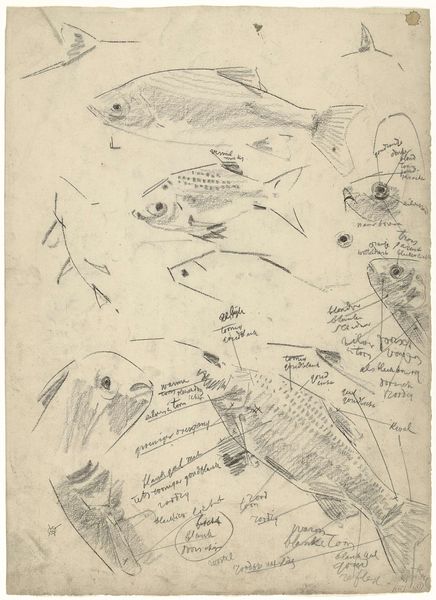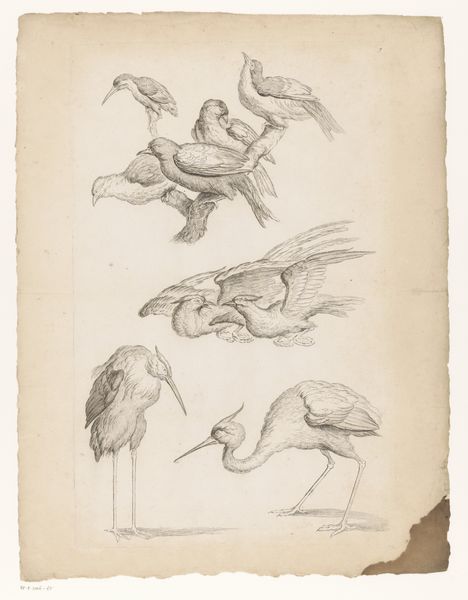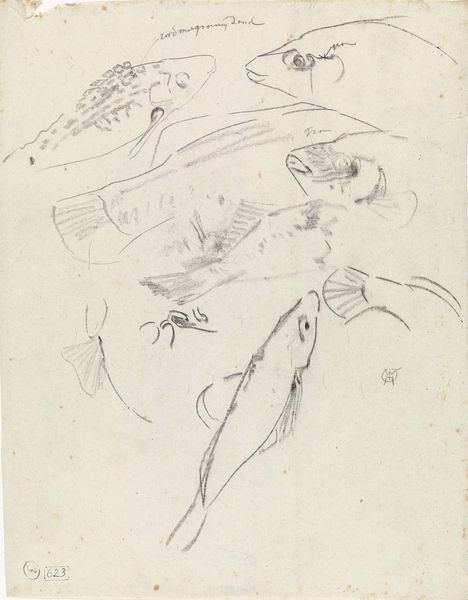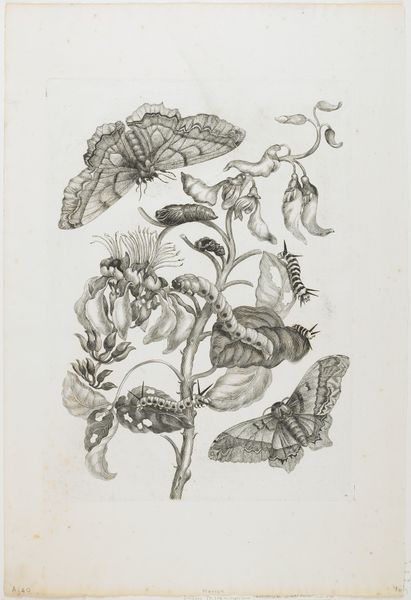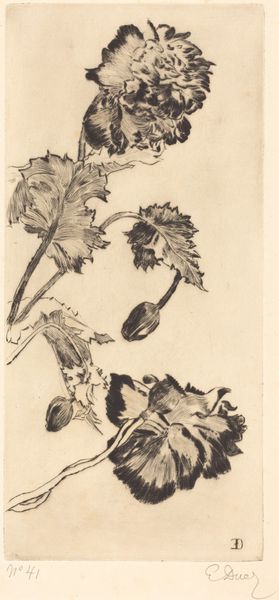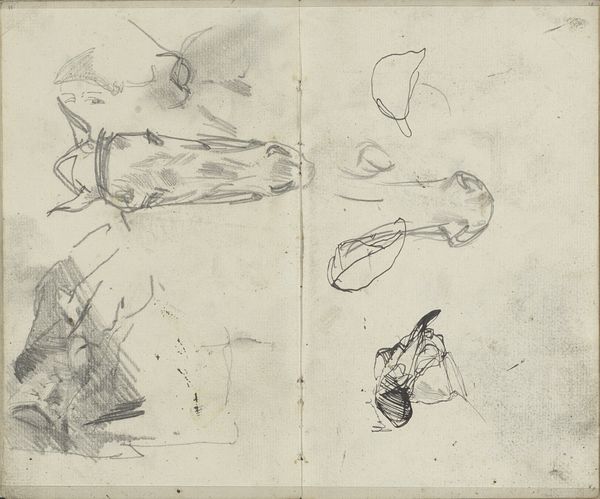
drawing, paper, pencil
#
drawing
#
light pencil work
#
quirky sketch
#
pencil sketch
#
paper
#
personal sketchbook
#
sketchwork
#
pen-ink sketch
#
pencil
#
sketchbook drawing
#
academic-art
#
sketchbook art
#
fantasy sketch
#
realism
#
initial sketch
Dimensions: height 320 mm, width 282 mm
Copyright: Rijks Museum: Open Domain
Editor: So, this is "Studieblad met meervallen," or Study Sheet with Catfish, by Theo Nieuwenhuis, from 1876 to 1951. It’s a pencil drawing on paper, and I find its quick, almost scribbled lines, really fascinating. What do you see in this piece? Curator: What strikes me immediately is the intersection of artistic practice and scientific observation. Nieuwenhuis isn’t just sketching fish; he's exploring form, texture, and movement. The catfish, often relegated to the murky depths, are brought to the forefront, demanding our attention. Think about the power dynamics inherent in observing and categorizing nature. Whose gaze is privileged here, and what does that tell us about the artist's position? Editor: That's a compelling perspective. I hadn't considered the power dynamics at play. It makes me think about how we represent marginalized subjects in art more broadly. The sketches are detailed, but do you think there is something of the artist's voice also here, like how they feel about these species? Curator: Absolutely, and it’s in those delicate lines, the nuances of shading, where we find the artist’s perspective. Nieuwenhuis wasn't simply documenting; he was interpreting, imbuing the catfish with a certain character. Now, consider the historical context – late 19th, early 20th century. What socio-political issues might have influenced his artistic choices, even in a seemingly simple study of fish? Editor: Perhaps the rise of scientific rationalism and a desire to understand the natural world fueled this kind of detailed observation? Or maybe the artist’s work reflect colonial influences and western exploitation, but that could be reading too much into it? Curator: It's important to acknowledge the colonial aspect, although a reading too far is less important than not thinking about it at all. These sketches become a mirror reflecting our own biases, how we choose to engage with both art and nature. This makes it really interesting, how such seemingly simple imagery prompts broader inquiries into our relationship with the natural world, with art itself. Editor: Thanks so much, I appreciate it! I learned a lot! Curator: Indeed. Considering the multiple facets allows us a far richer appreciation.
Comments
No comments
Be the first to comment and join the conversation on the ultimate creative platform.

